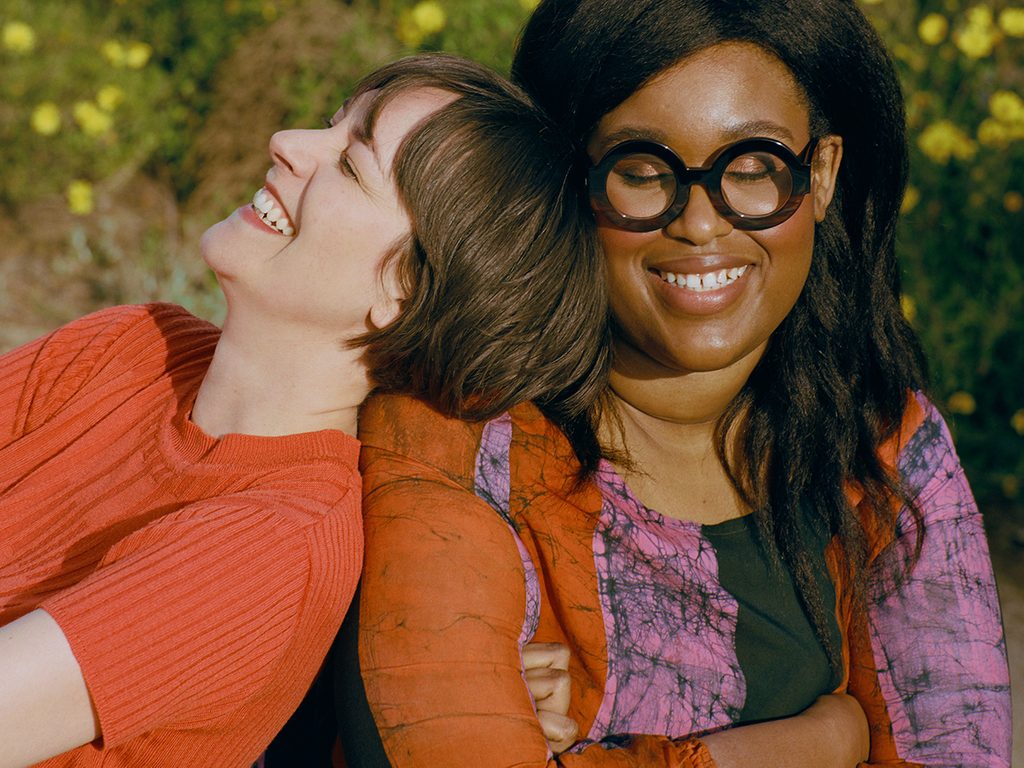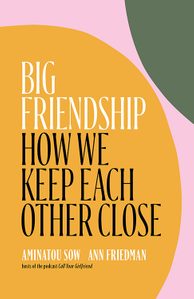How to Keep Your ‘Big Friendships’ Alive, Especially During a Pandemic

Five things we learned about friendship from the hosts of the Call Your Girlfriend podcast and their new book, Big Friendship.
In a few short months, the practice of “social distancing” has become an ingrained part of our psyche and our lives. There may be no better timing, then, for a book about how to maintain adult friendships — especially one written by two women who, after creating a wildly popular podcast on the topic, found their own friendship being tested like never before.
Aminatou Sow and Ann Friedman’s friendship started years ago, after a star-crossed meeting at a Gossip Girl viewing party in Washington, DC. It quickly grew into a long-distance “big friendship” that survived career changes, health scares and other challenges, largely through weekly catch up calls that they turned into the Call Your Girlfriend podcast in 2014.
When a rough patch hit, they thought their friendship was “too big to fail.” They were wrong. “With friendship, there is this expectation that it’s supposed to be easy, which… is not an honest assessment of what any long-term, intimate bond looks like.” Aminatou told The Atlantic. Their new book, Big Friendship: How We Keep Each Other Close, is about how their friendship survived the biggest, most painful fractures (hint: it involves therapy!), and examines how we often undervalue friendship’s role in society. Here are five things we learned about how to keep meaningful friendships in our lives, especially when keeping distance is a fact of life.
Stretching isn’t just for the gym
Sow and Friedman use stretching as a metaphor to describe the give and take that’s necessary to maintain a friendship over time, and have it weather the changes that life inevitably brings. “Those changes often shift the foundation on which the friendship was built,” they write. “That’s just how it is. You are not the person you were ten years ago, and you won’t be the exact same person in the next decade. For a Big Friendship to survive, it has to adapt.
Some stretches are small, they write, like getting over how long it takes for your friend to text you back. Others are much larger, like coming to peace with the amount of time one friend has for you after becoming a parent or getting a time-consuming job. “The amount of stretching doesn’t have to feel equal in every single moment—sometimes one person will require more from the friendship than the other—but over time, the give has to even out with the take.”
Know when a stretch becomes a strain
Sow and Friedman also use what happened in their own relationship to examine when a friendship is worth stretching for, and when a stretch becomes a strain. “If one person in the friendship is consistently stretched more than the other—adapting to the other person’s needs, or always having to explain herself and feeling like the other person isn’t retaining any of it—it’s probably more of a strain than a stretch,” they write.
A big danger, they add, is when neither person realizes they should be stretching. “It’s easy to forget that we’re all changing constantly,” they write. “We think this is why a lot of friendships don’t survive big life shifts. If you can’t acknowledge it openly when new circumstances are affecting your friendship, you can’t stretch to account for them.” The result, and explanation commonly offered, is: “We grew apart.”

“Big Friendship: How We Keep Each Other Close,” $33, amazon.ca
When it comes to issues of race, even your close friends can let you down
Sow recalls a night when she attended a party in Friedman’s backyard, and realized right away she was the only Black person there. “Could this really be possible?” she thinks. “After all these years of knowing Ann?”
They quote writer Wesley Morris in describing this experience as the “trapdoor” of racism. “The trapdoor describes the limited level of comfort that Black people can feel around white people who are part of their lives in a meaningful way. Even if these white people decide they will confront racism every day, it’s guaranteed they will sometimes screw up and disappoint the Black people they know. . . . The Black friend is forced to re-evaluate the friendship based on an incident that can, on the surface, seem relatively innocent.”
Sow brought up the evening months later, after realizing she had to put her feelings on the table. It didn’t end neatly. “We share many of the same high-level ideas about race and the way it contributes to inequalities and injustices in our world. We are adept at talking about the way racism plays out in the news or culture. We feel comfortable discussing the racism Aminatou has experienced at work or out in the world, and racist incidents Ann has observed with other friends. But when Ann becomes the source of the pain that Aminatou is feeling? We have a much harder time talking about that.”
No friendship is too big to fail
Sow and Friedman felt they were so interconnected in each other’s lives, failing at friendship simply wasn’t an option. They were wrong. “First, there was a succession of miscommunications and small, seemingly petty moments. None of these things were devastating on their own, but the bad feelings started to accumulate, making us more reluctant to confide in each other,” they write. “We were both cagey and self-protective, too scared and proud to be direct with each other about what we were feeling or what we needed.” It was hard to recognize that their different communication style was getting in the way, since they’d never had trouble communicating in the past.
A spa weekend together can’t fix everything
When Sow and Friedman’s relationship came to a breaking point, they made one last effort to save it: couples therapy. “We had so many feelings! What we didn’t have was a way forward. We didn’t know what it looked like to fight for a friendship. We would have to make our own way through it. And we realized we couldn’t do it alone,” they write. Their therapist helped to expose the cracks in their relationship and uncover the really, really, really big things that, over all those years, had gone unsaid.
And although they believed in the process from the start, they recognized it was outside most people’s comfort zone. “It still seems weird to say, ‘We went to therapy to save our friendship.’ ” they write. “It doesn’t sound so ridiculous when the flip side could easily be ‘We didn’t do everything we could to save our friendship.’ ”
Next, learn if you’re a good friend. Here are the habits that end friendships.




